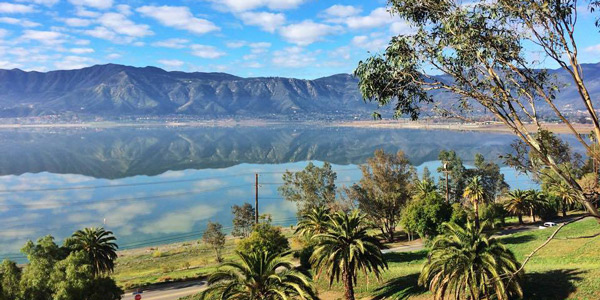By Hudson Sangree
FERC on Thursday rejected a request by developers of a proposed $2 billion pumped storage project for a declaratory order entitling it to cost-based rate recovery as a transmission asset in CAISO.
The commission sided with CAISO and the California Public Utilities Commission, which had argued that Nevada Hydro’s petition for its Lake Elsinore Advanced Pumped Storage (LEAPS) project was an end run around the ISO’s transmission planning process (TPP) (EL18-131).
“We dismiss Nevada Hydro’s petition and find that a request to designate LEAPS as a transmission facility is premature at this time,” FERC wrote. “LEAPS has not been studied in the CAISO TPP to determine whether it addresses a transmission need identified through that process, and, if such a need were met, how the facility would be operated. Absent such information, the commission cannot make a reasoned decision on whether LEAPS is a transmission project and thus eligible for cost recovery under the [transmission access charge].”
CAISO said FERC should not accept Nevada Hydro’s analysis that LEAPS is a cost-effective solution to transmission planning needs, noting that the company’s benefits study relied heavily on revenues from market-based services such as energy market sales, regulation, load following, capacity, spinning and ramping. The CPUC said it is unlikely that pumped storage will be the most cost-efficient means of meeting reliability, grid integration or greenhouse gas reduction targets between now and 2030.
Nevada Hydro cited FERC’s Western Grid ruling and its 2017 policy statement in seeking the project’s classification as a transmission asset. (See Storage Can Earn Cost- and Market-Based Rates, FERC Says.)
The $2 billion LEAPS project, which entered CAISO’s interconnection queue in 2005, has had a long and controversial history, with local governments and many residents opposed to its construction on the natural 3,000-acre Lake Elsinore, adjacent to the Cleveland National Forest in Southern California’s Riverside County.
This is the second time Nevada Hydro has failed to obtain FERC approval to advance the project. In the 2008 Nevada Hydro case, the commission rejected a request that CAISO assume operational control over the facility and found that the developers failed to show why it should be treated differently from other pumped hydro facilities that had not been granted rolled-in transmission pricing.
In seeking the declaratory order, Nevada Hydro said it, not CAISO, would maintain operational responsibility for LEAPS.
But the commission said that change did not entitle the project to circumvent the ISO’s planning process.
“Requiring LEAPS to be reviewed through the CAISO TPP is consistent with the commission’s policy that regional transmission planning processes should identify transmission needs and solutions in a coordinated, nondiscriminatory process that is open to all interested stakeholders,” the commission said. “We note that CAISO has committed to studying LEAPS as a transmission proposal, both as a means to address reliability needs (if it is submitted in an appropriate request window of CAISO’s TPP and if the proposal specifies the CAISO-identified reliability constraints the project could mitigate), and as an economic planning study request.”
The project would include 500-MW of pumped storage, the Talega-Escondido/Valley-Serrano 500-kV Interconnect and a 30-mile line to transmission systems owned by Southern California Edison and San Diego Gas & Electric. Its hydroelectric license application is pending before FERC (P-14227-003).




